Living with multiple dogs under one roof can be challenging, especially if they don’t always get along. Whether introducing a new dog to your household or dealing with long-standing issues between your furry friends, knowing how to keep them separated safely and effectively is essential.
Here we’ll explore some of the best ways how to keep dogs separated in same house, from using baby gates and crates to creating designated “zones” within your home. We’ll also discuss the importance of training and socialization to prevent dog conflicts. So if you’re struggling to manage multiple dogs in your home, read on for some helpful tips and tricks.
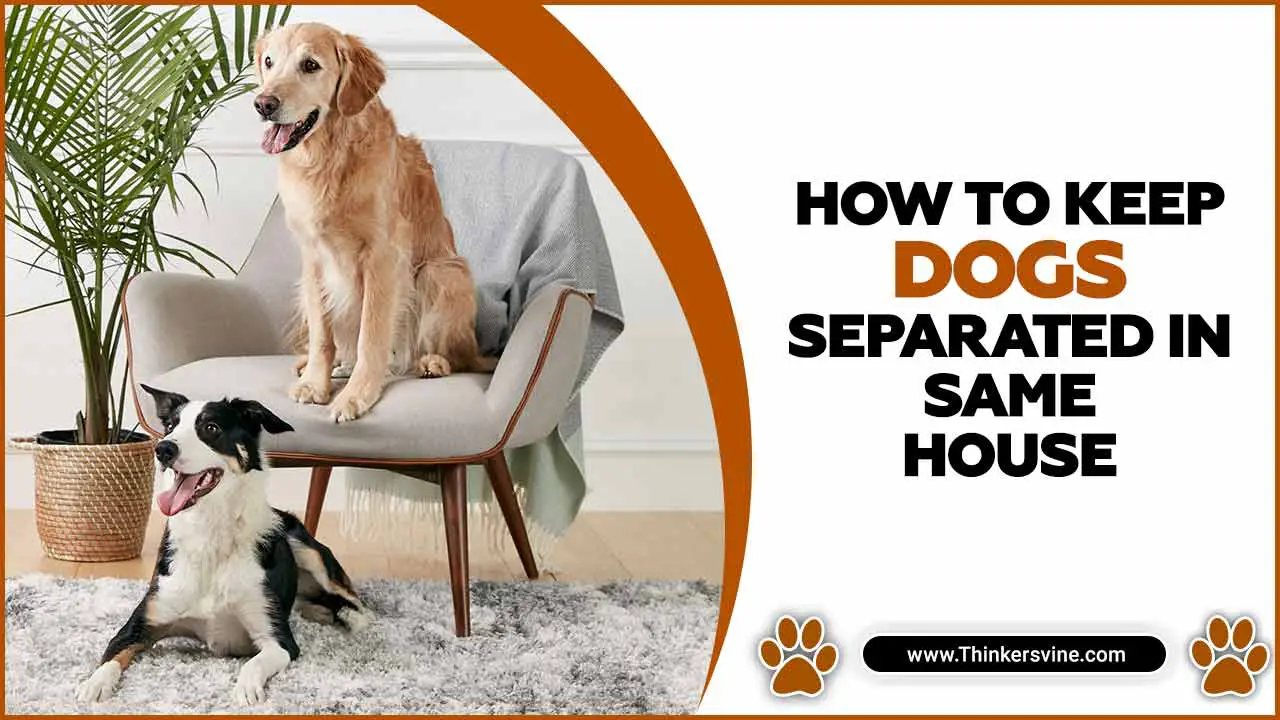
Dog Owner Experiences On How To Keep Dogs Separated In Same House
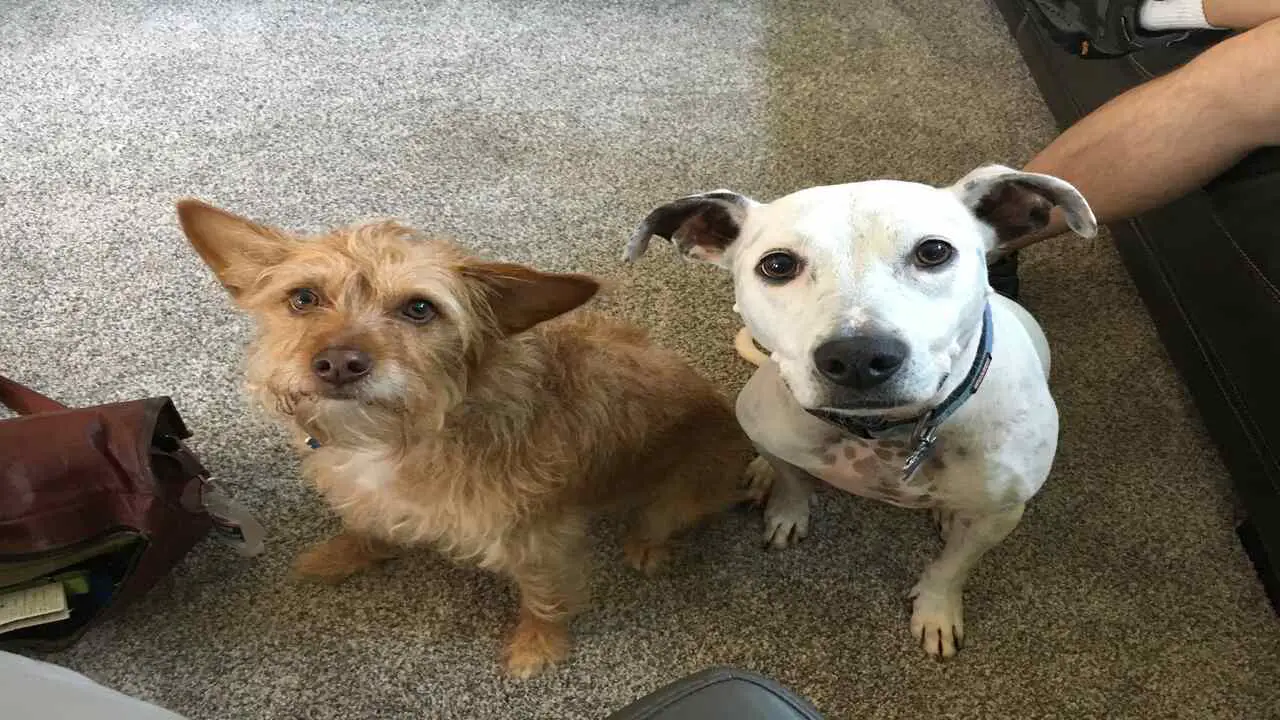
When keeping dogs separated in the same house, there are a few tips and tricks that experienced dog owners swear by. One effective method is to use baby gates or barriers to create separate areas for each dog. This allows them to have their own space and reduces the likelihood of conflicts. Another option is to establish a routine for each dog, such as feeding and walking times, so that they have minimal interaction with each other.
Additionally, some owners successfully use positive reinforcement training techniques to reward good behavior around each other. Ultimately, the best approach will depend on the specific dogs and their personalities, but with patience and persistence, it is possible to keep multiple dogs living together harmoniously.
How to Manage a Multi-Dog Household
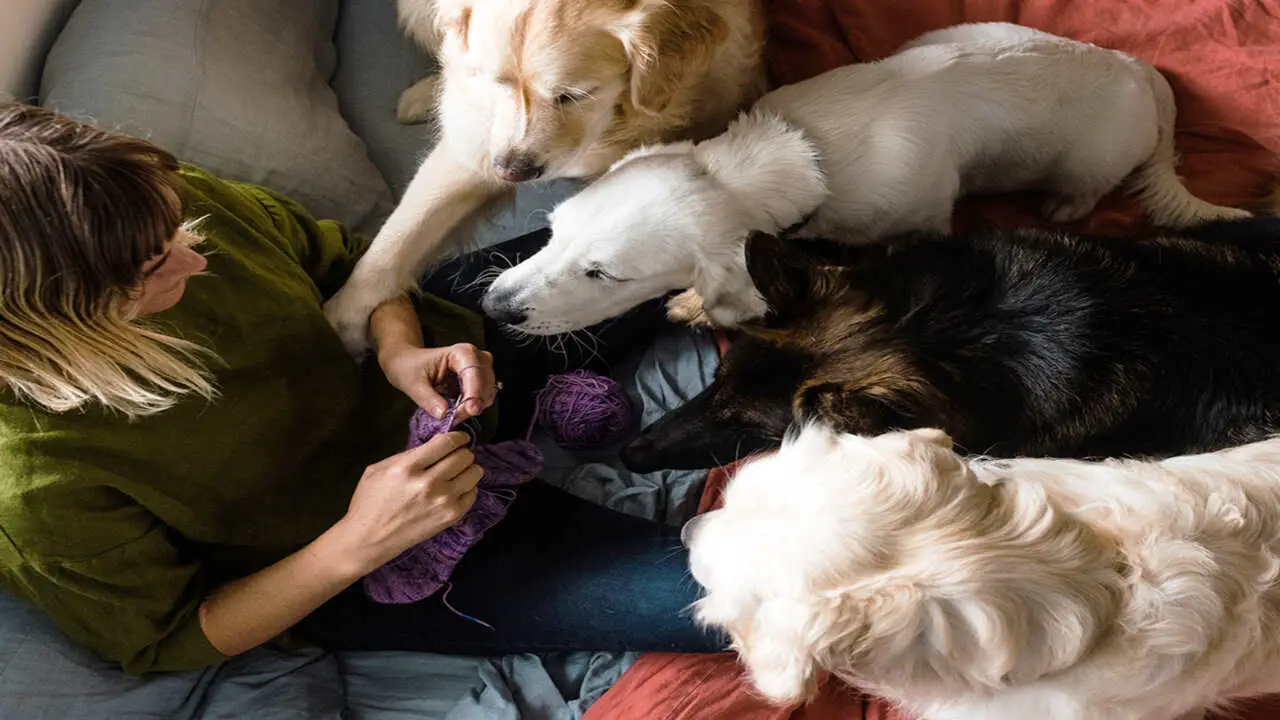
Managing a multi-dog household can be challenging, but keeping dogs separated in the same house with the right strategies is possible. If you own more than one dog, you know they can provide countless hours of joy and entertainment. However, it is not unusual for multiple dogs to challenge one another regularly, so managing a household with numerous dogs becomes vital. Here are some ways you can order a multi-dog family-
Food Management
Managing food is essential to keeping dogs separated in the same house. Feeding them in separate areas or at different times is recommended to prevent potential conflicts over food. This can be particularly important if one of the dogs has a history of resource guarding.
If you want your dogs to behave, keep them fed and well-groomed. If a dog does not get food, it will act hungry and more likely to trash your home or dig through the trash. Not everyone can afford to feed their dogs separately, but you should ensure you provide enough for their size.
Treats Management
Managing multiple dogs in the same household can be a challenge, but with the right approach, it is possible to maintain harmony and avoid conflicts. One effective strategy for keeping dogs separated is through treatment Environmental management. Treats and food can be used as a reward for good behavior. When you practice management in dog training, you can use treats to reward a dog.
Toys Management
Managing toys is essential for keeping dogs separated in a multi-dog household. It’s critical to ensure each dog has their toys and is kept separate from the other dogs’ toys. This can help to prevent fights and reduce tension between the dogs. Toys are another thing you can use to manage dogs. Ensure each dog has one or two toys just for that dog.
Exercise Management
Managing a multi-dog household can be challenging, but ensuring each dog gets enough exercise is essential. One way to do this is to take each dog on separate walks or to exercise them in different areas of the house or yard. This can help prevent conflicts and give each dog the space to burn off excess energy.
Dogs need exercise, and as a responsible dog owner, you should make sure your dogs are getting exercise every day. Take them on daily walks or to the park for playtime. Dogs that receive enough outdoor time tend to act happier and calmer than those that don’t receive enough exercise.
Bed Management
Managing a multi-dog household can be a challenge, especially regarding bed management. Each dog needs to have a designated sleeping space to prevent potential conflicts or territorial behavior. This can be achieved by providing individual attention to dog beds or crates in separate house areas.
All dogs need a comfy bed to sleep in. In a multi-dog household, it is common for dogs to fight over who gets to sleep where. If your dogs have separate beds, ensure they are each in their bed at night.
Doorways Management
Managing a multi-dog household can be a challenge, especially when it comes to keeping dogs separated. One effective strategy for achieving this is through doorway management plans. Using baby gates or pet barriers, you can create physical barriers that prevent dogs from entering certain areas of the house.
In a multi-dog household, your dogs may fight over doorways. If you want to keep all the dogs out, put them up and close their doors at night. You can also place pet gates in the front doorways so they will not jump over open ones.
Training Management
Managing a multi-dog household can be challenging, but proper training and management can be a rewarding experience for both dogs and owners. Establishing clear boundaries and rules is critical to managing multiple dogs in the same house. This includes teaching each dog basic obedience commands such as “sit,” “stay,” and “come.” It’s also essential to create separate areas for each dog to eat, sleep, and play to prevent potential conflict or competition.
How To Prevent Dog Attacks?
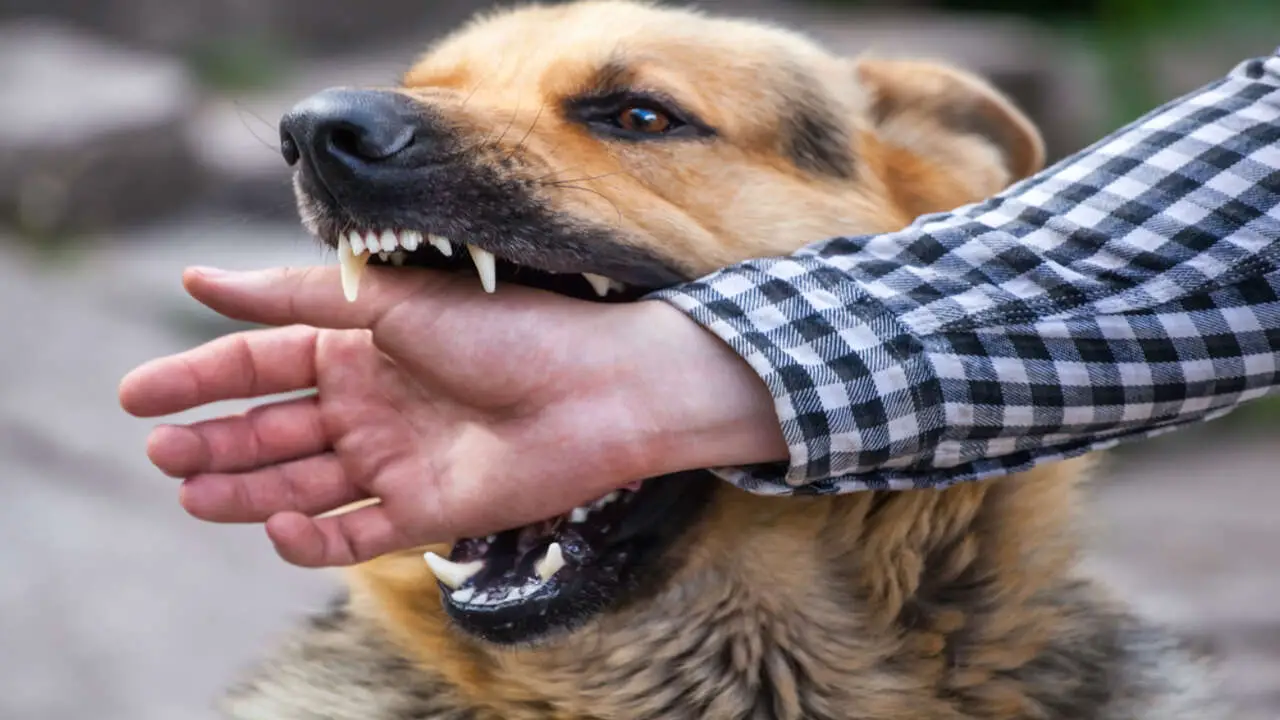
Preventing dog attacks is a top priority for any pet owner with multiple dogs in the same house. Dogs bark and are usually calm and friendly. They lick people, snuggle with them; they give you unconditional love. But sometimes, dogs can turn into monsters that bite and attack people. However, you can help prevent these outbursts. Here are some steps to prevent dog attacks-
Do Not Run; stand still
Standing still before your dog is better when you discover aggressive behavior. Do not run away. When you run, it seems you provoke him to attack you more, while your dog will stop attacking when standing still.
If you find yourself in a situation where two dogs are fighting or one dog is aggressively approaching, it can be tempting to try to run away. However, this can escalate the situation and make it more dangerous. Instead, it is important to stand still and avoid making any sudden movements. This can help prevent the dogs from becoming more aggressive and may give you quality time to remove yourself from the situation safely.
Do Not Move Your Hands
It is better to hold your hands still. If you move them, the dog might think you are being aggressive. Preventing dog attacks can be crucial in keeping all dogs in the same house safe. One important tip to remember is to avoid moving your hands toward the dogs during any interactions. This can trigger a territorial response and lead to aggression.
Instead, use a barrier such as a baby gate or crate to separate the dogs when necessary. Monitoring their body language and behavior is also essential, as signs of tension or stress can indicate a potential issue. By being proactive and preventing dog attacks, you can help ensure the safety and well-being of all dogs in your household.
Avoid Making Noise
Don’t make noise after the dog attack, especially the sound of screaming. This can confuse your dog and may lead to an attack. Avoiding noise is crucial when keeping dogs separated in the same house or preventing attacks. Loud noises can startle dogs and cause them to react aggressively toward each other. This can be particularly problematic if you have multiple dogs in the same household prone to conflict. It is essential to keep the environment as calm and quiet as possible to prevent this. This may mean avoiding loud music or sudden movements that could startle your dogs.
Additionally, if you need to intervene in a conflict or aggression between dogs, can your dogs try to do so calmly and quietly, using gentle but firm commands to separate them? By reducing noise levels and approaching conflicts calmly, you can help prevent dog attacks and keep your furry friends safe and happy.
Do Not Make Eye Contact
If your dog is approaching you, do not make eye contact. Dogs can get aggressive if someone does this. When preventing dog attacks or keeping dogs separated in the same house, it is essential to remember that eye contact can be interpreted as a sign of aggression. Dogs may see direct eye contact as a challenge or threat, which could lead to an aggressive response.
To prevent this, it is recommended that you avoid making direct eye contact with the dogs and instead focus on other things in the environment. Additionally, monitoring their body language and behavior for signs of aggression or tension is essential. You can help keep your dogs safe and happy in the same household by being aware of these cues and taking steps to prevent confrontations.
Back Away Slowly
Suppose your dog is approaching you; back away slowly. Suppose the dog has lost interest in you. Preventing dog attacks is crucial for the safety of both humans and dogs. If you encounter an aggressive dog, it is essential to remain calm and avoid making any sudden movements.
One effective technique for preventing a dog attack is to back away slowly while maintaining eye contact with the dog. This can help show the dog that you are not a threat and allow you to distance yourself from the situation safely.
It is also essential to avoid running or screaming, as this can trigger the dog’s prey drive and increase the risk of an attack. Remember always to respect a dog’s space and boundaries, and never approach or touch an unfamiliar dog without permission from its owner. By following these precautions, you can help prevent potential dog attacks and ensure the safety of yourself and those around you.
Change In A Resident Dog’s Health Or Age

As dog’s age, their health and behavior can change, which may require them to be separated from other dogs in the same household. Suppose one of your resident dogs is experiencing health issues or has reached a certain age requiring more rest. In that case, separating them from other dogs with higher energy levels may be necessary.
Changes in your dog’s behavior might indicate sicknesses, such as canine dementia or cognitive impairment, or they could be a natural part of age. Here are some changes that usually occur in an ageing dog-
- Change in Nutritional Needs: As a dog ages, its food bowl requirement decreases.
- Change in Body Weight: As the dog ages, the dog starts to lose weight.
- Change in Hair, Coat, and Skin: A dog’s coat starts to thin out due to changes in age and health.
- Change in Temperament: Dogs usually become smarter or less friendly as they age. Also, a dog might become less active or playful as he ages.
- Urinary Incontinence: Your dog might start urinating in uncontrollable amounts. It can even begin to pee on its crate.
- Tendency to Sleep More: Your dog might sleep more than usual when ageing.
It is best to schedule an appointment with your veterinarian as soon as you notice any changes in your dog.
Changes In The Household Or Routine
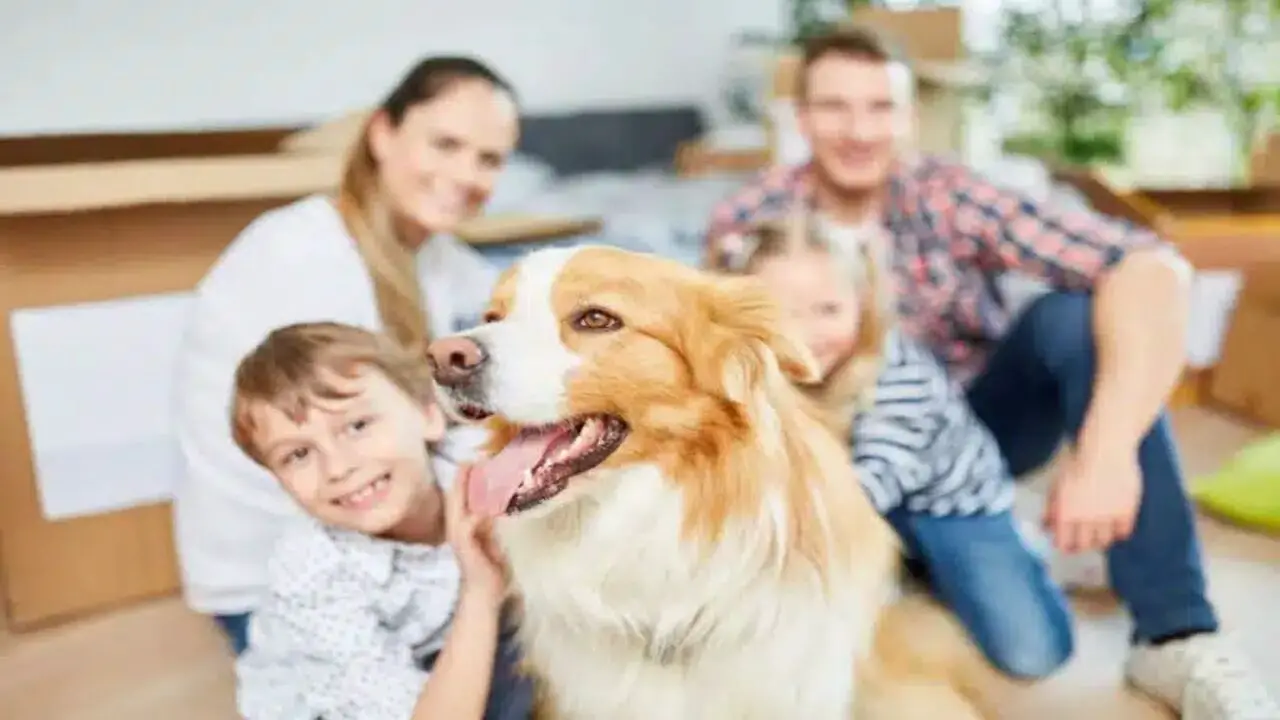
A dog’s personality and behavior begin to change with age. Sometimes a dog’s personality changes drastically, or he no longer listens to his owner. Many elderly dogs do not like being touched or become depressed when their daily life no longer stimulates them.
Also, elderly dogs usually become less active and will sleep more throughout the day. There are also changes in their routine, including going to the bathroom in different areas of the house, going outside to take walks less frequently, and even refusing their food or dropping it on the ground. They may eat less, they may become picky about the food they eat, or sometimes they will have a loss of appetite altogether.
Changes In The Canine Social Group
As dogs age, they might become less interested in playing with other dogs. They may also have a more challenging time learning new tricks. They may need more social structure, grooming, attention, and affection. An ageing dog may experience cognitive dysfunction, which changes his mental capabilities and social functioning.
This causes them to be less interactive with their social group. Dogs with Cognitive Dysfunction often develop depression, and some may experience aggressive behavior. Additionally, a dog with cognitive dysfunction may be less aware of his surroundings. This may be difficult for the owner’s attention, as their dog may become more anxious and aggressive.
How Do You Stop Two Family Dogs From Fighting?
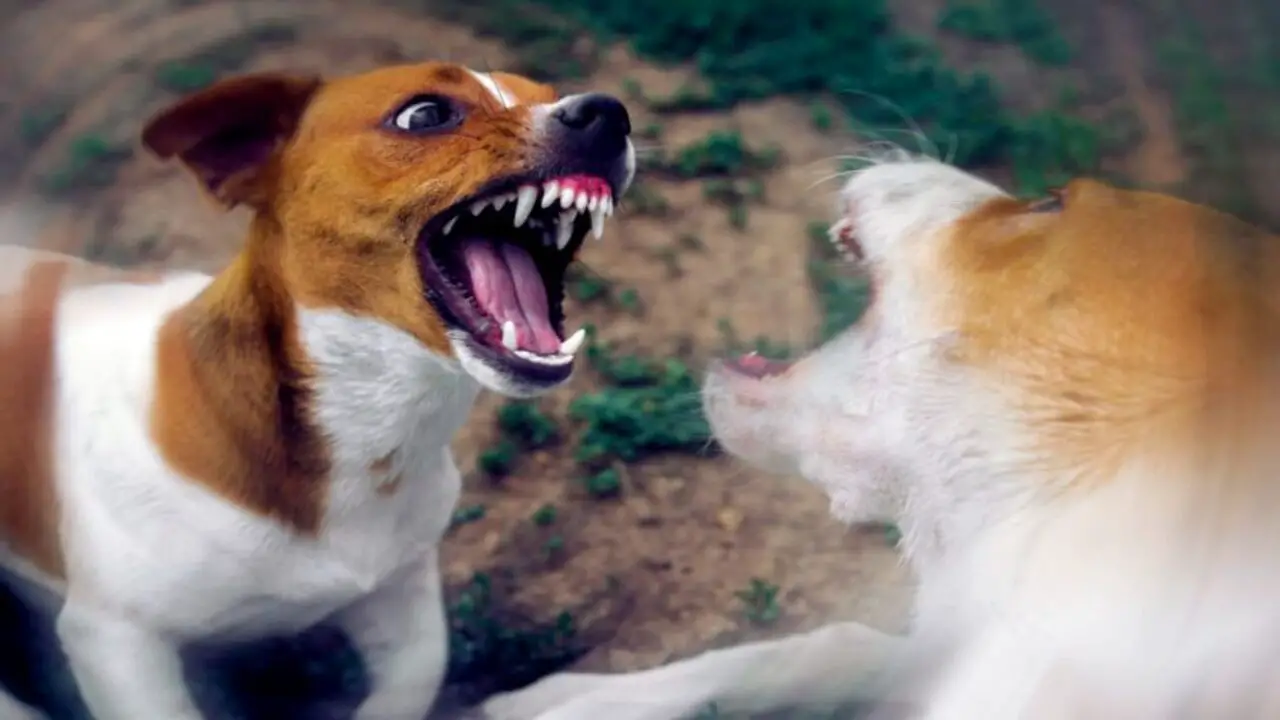
When two family dogs start fighting, it can be a stressful and concerning situation. The safety of the dogs and the people in the household should be the top priority. Remember, preventing fights between family dogs is crucial for their well-being and harmony within the household. Here are some steps to help stop two family dogs from fighting between dogs:
- Remain Calm: Staying calm and composed during a dog fight is important. Yelling or panicking can escalate the situation further.
- Separate the Dogs: If it’s safe to do so, try to physically separate them by using barriers such as baby gates or crates. Avoid putting yourself at risk of getting bitten in the process.
- Use distraction Techniques: Try using loud noises or water sprays to distract the dogs and break up their focus on each other.
- Seek Professional Help: If the fights continue or become more frequent, it’s recommended to seek assistance from a trained professional dog trainer or behaviorist who can assess the situation and provide guidance on addressing the underlying issues causing the fights.
Conclusion
Determining whether to apply a specific administration policy to keep all combat dogs is personal and always challenging. Owners should be trained to make the best decisions. These techniques ensure your dogs remain safe and comfortable in their shared living space.
If you’re struggling to keep your dogs separated, don’t hesitate to seek professional help from a certified dog trainer or behaviorist for personalized advice and solutions. And therefore, they must be valued and encouraged wherever possible for their choices. We hope this article has helped you regarding how to keep dogs separated in same house correctly and nicely.
FAQs:
[rank_math_rich_snippet id=”s-c662a847-dd14-4330-b5f6-d7f0a4ec654b”]